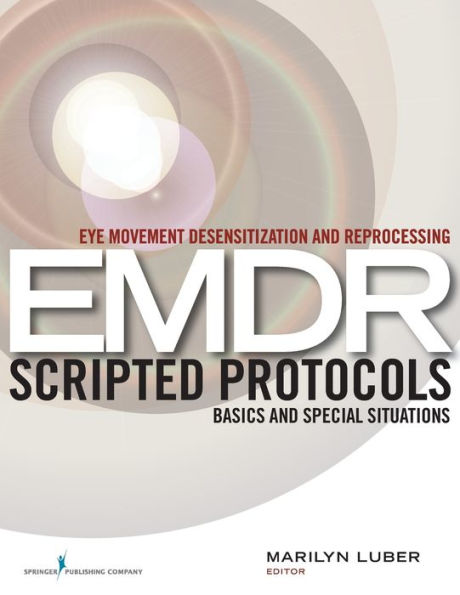—Doody's
Praise from a practicing EMDR therapist and user of Eye Movement Desensitization and Reprocessing (EMDR) Scripted Prools:
"Kudos to...everyone who contributed to this important volume....[It] is an indispensable resource. Thank you, thank you, thank you!
—Andrea B. Goldberg, LCSW
EMDRIA Certified EMDR Therapist
EMDRIA Consultant-in-training
Bloomfield and Newark, NJ
This book serves as a one-stop resource where therapists can access a wide range of word-for-word scripted prools for EMDR practice, including the past, present, and future templates. These scripts are conveniently outlined in an easy-to-use, manual style template for therapists, allowing them to have a reliable, consistent form and procedure when using EMDR with clients.
The book contains an entire section on the development of resources and on clinician self-care. There is a self-awareness questionnaire to assist clinicians in identifying potential problems that often arise in treatment, allowing for strategies to deal with them. Also included are helpful past memory, current triggers and future template worksheet scripts.
Key topics include:
• Client history taking that will inform the treatment process of patients
• Resource development to help clients identify and target their problems to regain control when issues appear overwhelming
• Scripts for the 6 basic EMDR Prools for traumatic events, current anxieties and behaviors, recent traumatic events, phobias, excessive grief, and illness and somatic disorders
• Early intervention procedures for man-made and natural catastrophes
• EMDR and early interventions for groups, including work with children, adolescents, and adults
• Written workbook format for individual or group EMDR
• EMDR to enhance performance and positive emotion
—Doody's
Praise from a practicing EMDR therapist and user of Eye Movement Desensitization and Reprocessing (EMDR) Scripted Prools:
"Kudos to...everyone who contributed to this important volume....[It] is an indispensable resource. Thank you, thank you, thank you!
—Andrea B. Goldberg, LCSW
EMDRIA Certified EMDR Therapist
EMDRIA Consultant-in-training
Bloomfield and Newark, NJ
This book serves as a one-stop resource where therapists can access a wide range of word-for-word scripted prools for EMDR practice, including the past, present, and future templates. These scripts are conveniently outlined in an easy-to-use, manual style template for therapists, allowing them to have a reliable, consistent form and procedure when using EMDR with clients.
The book contains an entire section on the development of resources and on clinician self-care. There is a self-awareness questionnaire to assist clinicians in identifying potential problems that often arise in treatment, allowing for strategies to deal with them. Also included are helpful past memory, current triggers and future template worksheet scripts.
Key topics include:
• Client history taking that will inform the treatment process of patients
• Resource development to help clients identify and target their problems to regain control when issues appear overwhelming
• Scripts for the 6 basic EMDR Prools for traumatic events, current anxieties and behaviors, recent traumatic events, phobias, excessive grief, and illness and somatic disorders
• Early intervention procedures for man-made and natural catastrophes
• EMDR and early interventions for groups, including work with children, adolescents, and adults
• Written workbook format for individual or group EMDR
• EMDR to enhance performance and positive emotion

Eye Movement Desensitization and Reprocessing (EMDR) Scripted Protocols: Basics and Special Situations
480
Eye Movement Desensitization and Reprocessing (EMDR) Scripted Protocols: Basics and Special Situations
480Paperback(New Edition)

Product Details
| ISBN-13: | 9780826122377 |
|---|---|
| Publisher: | Springer Publishing Company |
| Publication date: | 05/18/2009 |
| Edition description: | New Edition |
| Pages: | 480 |
| Product dimensions: | 8.50(w) x 10.90(h) x 1.20(d) |
